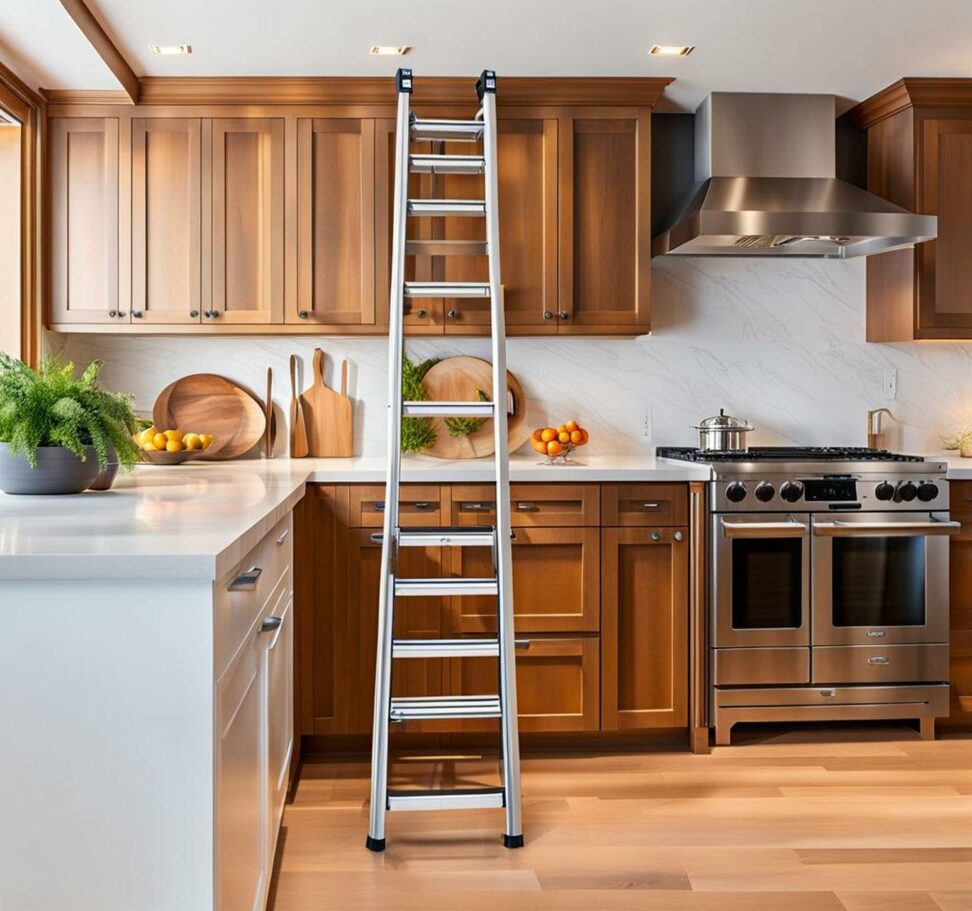Step Up Your Kitchen With The Ideal Cabinet Step Ladder
Having a ladder in your kitchen can make a world of difference when it comes to comfortably and safely accessing items stored in overhead cabinets. With a wide variety of ladder styles to choose from, you're sure to find one that suits your space and storage needs perfectly. This comprehensive guide will explore the many benefits of using a kitchen ladder and provide key considerations for selecting the ideal option to step up your culinary workspace.
Kitchen ladders have been used for generations to provide easy access to upper cabinets and pantries. Before modern refrigeration, larder cabinets were used to store food and needed ladders for reach. While kitchen layouts have evolved, high wall cabinets remain popular for maximizing storage in the kitchen. A ladder in your kitchen allows you to comfortably access items in hard-to-reach areas and makes cleaning the tops of tall cabinets much easier.
Types of Kitchen Ladders
When choosing a ladder for your kitchen, consider which style best fits your space constraints, storage needs, and aesthetic preferences. Here are some of the most popular kitchen ladder varieties:

Storage Ladders
Storage ladders are freestanding ladders with integrated shelves, providing both access to upper cabinets and handy storage for kitchen items. The ladder frame serves as shelving on its own or can hold removable storage baskets. Storage ladders come in materials like wood, steel, or aluminum. Retractable storage ladders fold into a compact footprint when not in use.
The benefits of a storage ladder include dual-purpose functionality for storage and access. Folding storage ladders are great for small kitchens. Consider your needs when choosing between open or enclosed storage units.
Rolling Ladders
For large kitchens, a rolling ladder on a ceiling-mounted track provides access across extensive stretches of cabinetry. Roll the ladder side to side on its wheels. Pros are the range of motion and classic aesthetic. Cons include needing to install tracking hardware and weight limits that are lower than stationary ladders.
When installing a rolling ladder, make sure the track is properly secured and allows the ladder to roll smoothly. Measure track length to match your cabinetry. Grease wheels annually for quiet operation.
Step Ladders
Standard household step ladders work well for kitchen cabinet access. Foldable and self-supporting, these portable ladders are ideal for small kitchens with minimal storage space. Look for sturdy wooden or aluminum options with non-slip steps.
Consider weight limits of 200-225 pounds for safe use. Never stand on the top step and maintain three points of contact when climbing. For extra stability, have someone hold the ladder from the bottom.
Library Ladders
Library-style ladders have horizontal steps accessed from a side rather than climbing rungs from the front. The unique aesthetic makes them a popular built-in ladder choice. Optional bookshelves, cabinets, and hooks allow for storage.
Library ladders work well positioned against kitchen islands for a clean, integrated look. Matching wood finish with existing cabinetry creates appealing cohesion. For a visible statement piece, opt for a contrasting style or color ladder.
Cabinet-Mounted Ladders
For kitchens with limited floor space, ladders that mount directly to cabinets provide hidden access when folded up. Cabinet-mounted ladders attach via hinges for easy pull down access. Styles range from minimalist metal rails to intricate wood frameworks with storage.
Proper installation is key for sturdy attachment and smooth folding operation. Take cabinet material and door design into account for seamless integration. Add padding along the top edge for protection.
Ladder Placement and Design
Proper kitchen ladder placement provides optimal ease of use for storage and cabinet access. Consider positioning your ladder near notoriously hard to reach areas like over islands or appliances. Ladders next to pantries or refrigerators make grabbing ingredients convenient. Place the ladder within easy reach from workflow zones like ovens or sinks without impeding movement.
For a cohesive look, choose a ladder style and color that complements your existing cabinetry. Matching wood tones create a custom built-in appearance. Contrasting metals or colors make the ladder an accent focal point. Incorporate decorative lighting or art installments onto the ladder frame to double as a display piece.
Ladder Height and Weight Considerations
Maximize accessibility by selecting a ladder height extending at least 2 feet taller than your tallest kitchen cabinets. This provides a sturdy climbing angle without overreaching. For ultimate versatility, adjustable ladder extensions or removable rail sections accommodate varying cabinet heights.
Consider weight limits when shopping for a kitchen ladder. Materials like aluminum are light yet durable, while wood matches cabinetry aesthetically with more weight. Standard ladders accommodate 200-300 lbs, but slimmer rolling ladders often max out at 150 lbs capacity. Heavier duty options are available for improved strength.
Routinely inspect your ladder for stability and operation. Check extensions retract properly and wheels roll smoothly. Replace worn parts when needed. Avoid overloading shelves, and only allow one person on the ladder at a time for safety.
Shopping for the Perfect Ladder
While pre-made ladders offer quick installation, custom building or DIY kits allow you to modify specifications like width, accessories, and color to fit your kitchen design needs. Expect to budget $100-$500 for a quality prefab ladder, $200-$800 for custom. Measure existing cabinetry carefully prior to purchasing or building.
When comparing ladder styles, consider key factors like footprint dimensions, weight capacity, materials, and height adjustments available. Add-ons like storage baskets, butcher block tops, and side cabinets provide customization. For rolling ladders, ensure the track length spans your whole bank of upper cabinets.
A kitchen ladder enables you to make full use of storage space in hard to reach areas and prevents risky climbing onto countertops. Match your choice of ladder style and aesthetics to complement your existing kitchen decor. Proper placement and regular maintenance ensure your ladder provides safe and convenient access for years to come. Keep these tips in mind, and you’re sure to find a kitchen ladder that maximizes both functionality and visual appeal.